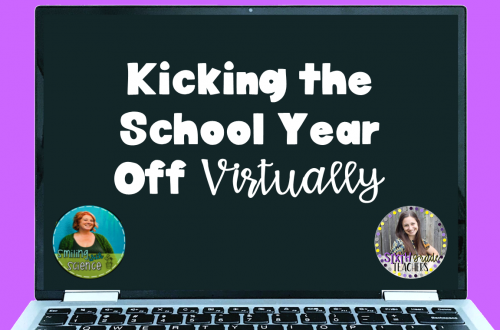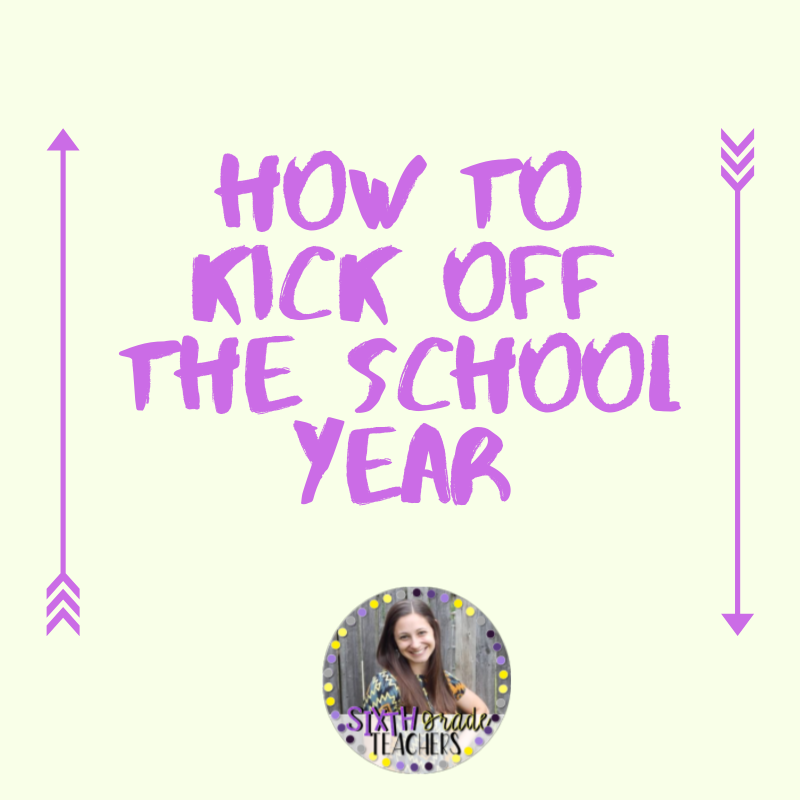
How to Kick Off the School Year
First Day of School
I will be going into my tenth year of teaching and every year it never fails; I still get nervous and excited to meet my new sixth graders! If I am feeling nervous and excited, I can only imagine how my students must be feeling! My middle school is grades 6-8 so this is the first time sixth graders have lockers and have different teachers. Sixth graders are, therefore, most anxious about their lockers, navigating their schedule and the new building, and making friends. To alleviate the anxiousness of lockers, we (as a sixth-grade team) practice opening lockers frequently throughout the first day. To practice navigating the building, we plan a scavenger hunt that familiarizes students with common locations (gym, cafeteria, library, band/choir rooms, etc.) and emergency procedures, but also teaches some history of our building. Finally, in our individual classes, we will do get to know you activities to allow students to meet new people. This, honestly, can take up most of the first day but if I have time to spare, then I throw other activities into the mix that I will share below.
Positive Attitude
So, how do I kick off the school year on the right foot? First of all, come in with a positive attitude. Don’t forget that not only is the school year a fresh start for students, but it is also a fresh start for you. Maybe you had a rough year last year. This year can and will be different with the right mindset and putting the right things into place from the start.
First Week of School Goals
Every year, I focus on the same three goals during the first week of school.
- Classroom Community Building
- Relationship Building
- Teaching Routines and Procedures
Taking the first week to focus on these three goals rather than diving right into the curriculum has made a world of difference in my classroom. The classroom community feels like a family. Relationships are stronger. Routines and procedures run smoothly like well-oiled machines. It is so worth it.
Classroom Community Building
Establishing and building a positive and conducive learning classroom community starts day one. Students need to feel valued, respected, loved, and supported for learning to occur. One activity that I love doing every year is a post-it note activity where I get students’ feedback, such as classroom values, goals, what students need to be successful, etc. I will set up chart paper and sticky notes around the room, then break students into groups. Students will move around the room answering the questions on post-it notes, and once finished we debrief by going over some of the top answers. This sets the tone and allows students to have a voice in our classroom. TIP: I color code my post-it notes by class period. Grab the First Day Post-It Note Activity (freebie).
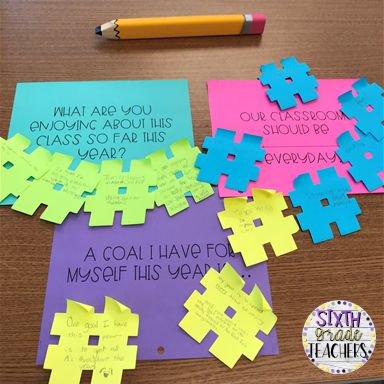
Other Ideas:
- A fun idea to get students up, moving, and sparking easy conversation is to play the HedBanz Game. You can purchase the game or make your own easily. Students each wear an index card “headband” taped to their forehead that has a fictional or real character written on it. Students walk around the room asking yes/no questions to their peers to determine the character on their forehead. You can set time limits or rules, such as students can only ask one question to each student.
- Christina from @teachlikeagirl shared an icebreaker activity on Instagram where students use commonalities written on index cards to build the tallest tower. Check out the post here for more details!
- I love starting off the year discussing and having students experience growth mindset. Stephanie from @teachinginroom6 shares a growth mindset activity she found where she folds a paper in a crazy looking shape and asks students, in groups, to recreate it. As students work, she jots down things she hears and sees. This leads to a great discussion about the power of a growth mindset. Check out the blog post here for more details.
Relationship Building
Get to Know You
Relationship building is key from day one. Get to know your students. They want you to know all about them. To do this, I created a Get to Know You Survey in Google forms where students answer basic questions, like name, nickname, siblings, pets, favorite things, and sports/activities they are involved in. I also ask students to set a goal for class and explain what they will need from me in order to be successful. The final question is always open-ended, allowing students to share any other information they would like me to know. I love having a digital copy rather than a hard copy with this information that I can reference at any time. Click here to edit the Get to Know You Survey. Another idea to get to know students would be for them to record an introduction (including this type of information) using Flipgrid.com. I don’t go back until September so I haven’t decided which option I will be doing yet!
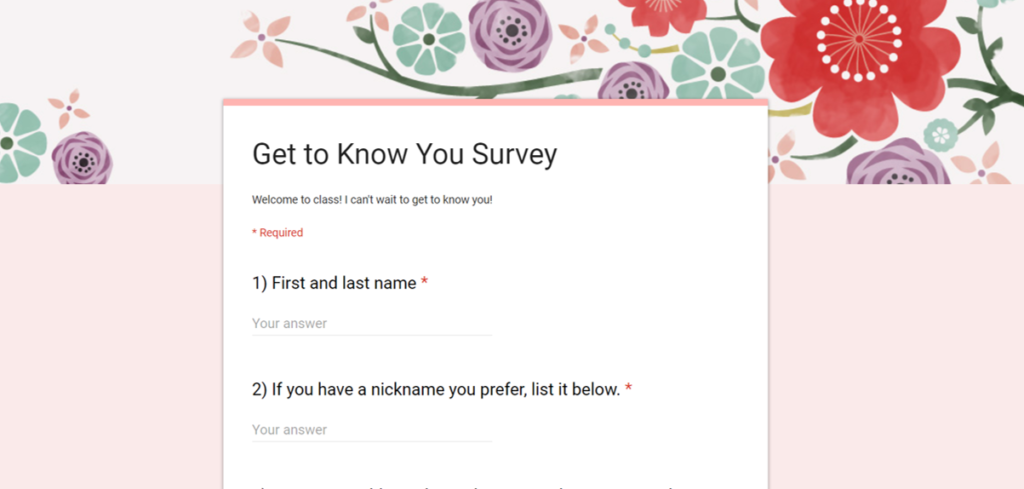
Get to Know Me
As much as students want you to get to know them, they also want to get to know you! To do this, I created a quiz in Google forms that asks multiple-choice questions about me. Students get to know a little about my family, hobbies, and favorites. They will receive immediate feedback on their answers to know whether they were right or wrong. The last three questions are open-ended with no answer key included. I ask students to observe me and my classroom and record observations. The following question asks students to draw conclusions about our classroom and my personality. Finally, I allow students to ask any questions they want to know about me. This is all done in real-time. After giving students a certain amount of time to complete, I will have students share what they learned about me, observations, conclusions, and ask anything else they want to know. Click here to edit the Get to Know Me Quiz.
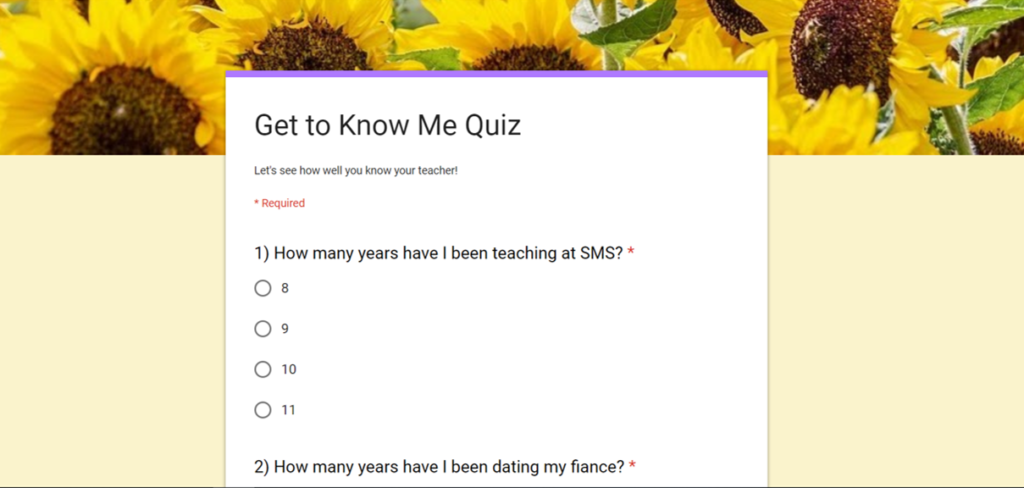
Teaching Routines and Procedures
Classroom Routines and Procedures
I typically hand out my syllabus and go over it with my students with a fun little twist; I quiz them on it! I created a quiz in Google Forms which tests students on policies and procedures, including questions on my homework policy, bathroom policy, work completion policy, cheating policy, entering and exit procedures, etc. This keeps students on their toes and engaged while learning about how our classroom operates. Click here to edit the Classroom Policies and Procedures Quiz.
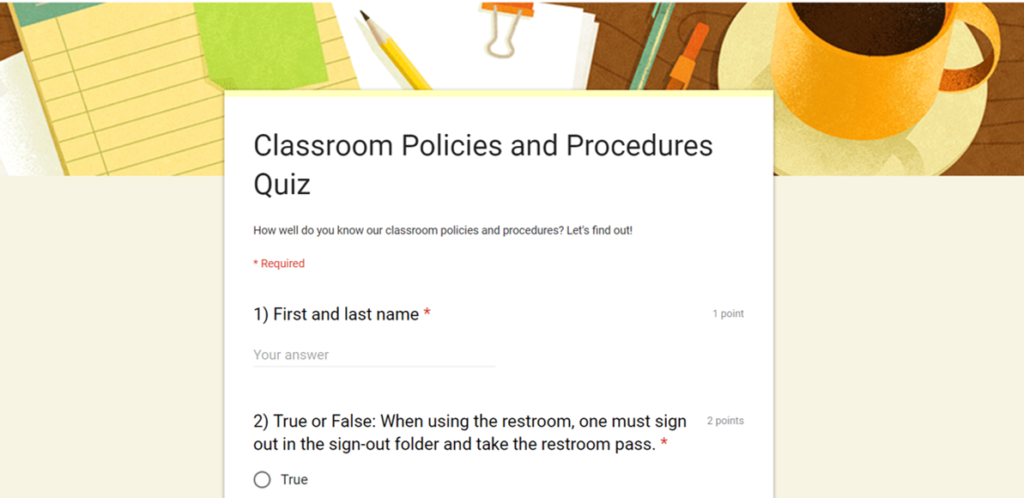
Class Value Meme Activity
If you read my last blog post, you know I like creating class values rather than having class rules. Creating, demonstrating, and recognizing class values is a routine/procedure in my classroom as I want students to be embodying these values on a regular basis. Using my post-it note activity I mentioned earlier helps to generate ideas. Another idea would be to have students create a Class Value Meme. They can create it in google, share it with you, and then you can compile the values into a presentation. Students can vote on the top ten (or however many you decide). Grab the Class Value Meme (freebie).
Establishing Group Work Procedures
Establishing group work procedures is so important as different teachers have different expectations for what group work might look like and/or sound like. I was introduced to the 100 Activity, created by Sara Van Der Werf last year and it was so fun and easy to use in my math class! Break students into groups of 3-5 (4 is ideal) and students work together to complete a task in 3 minutes. Students will complete the task at least a few more times, striving to do better each time. As students are working, I snap pictures of groups working well together. Discuss patterns and how groups worked together to be successful. This leads to a quick-write where students respond to the question “what does great work in math class look like”? We share out and create an anchor chart that has all of our ideas and is constantly referenced throughout the year. I also print the pictures I took and put them on the chart. See the full blog post here and grab the resources needed.
Content-Specific
Nearing the end of the first week, I ask my math and ELA classes to construct mini projects to learn more about one another. It is a nice transition into teaching and learning and gives me an informal assessment of student’s abilities.
Get to Know Me Math Project
In math, students are asked to create expressions based on numerical facts about themselves (such as shoe size, birth date, number of siblings or pets, etc) and solve the expressions showing their work. Work and answers are hidden under flaps or post-it notes on poster board. The following day, classmates solve the expressions and get to know fun numerical facts about their peers. Grab the Get to Know Me Math Project.
Get to Know Me ELA Project
In ELA, students receive a template with flip flops and are asked to briefly write using details and imagery about 5 activities they completed this summer in their shoes. It could be as simple as walking the dog, seeing their favorite movie, etc. Students can then illustrate the activity and decorate the flip flops. The following day, classmates can share and learn more about one another. I also use this activity to discuss empathy and what it is like to walk in someone’s shoes, reminding students that we really don’t know what others are going through. Another option would be to only have students write about 3 activities they “completed” over the summer and turn it into 2 truths and 1 lie. This could lead to a great discussion on how writers sometimes embellish details for entertainment purposes. Grab the Get to Know Me ELA Project.
Concluding Thoughts
So, you are probably wondering do I really do all of these activities during the first week of school? The answer is no, it is not possible to do all of these activities that I mentioned above during the first week of school, but I wanted to provide you with ideas that I have personally used in my own classroom. Pick and choose what will work for your students and your classroom.
You are probably also wondering when I dive into the curriculum. The answer is the second week of school. I spend the time during the first week of school to build a classroom community, to build relationships with my students, and to teach routines and procedures. This sets the tone for the year and I wouldn’t do it any other way.
I know the beginning of the year can be stressful. Hopefully, you find this blog post helpful and walked away with at least one idea you can implement in your classroom. If you have a favorite idea for the first day or week of school, I’d love to hear it. Comment below!




